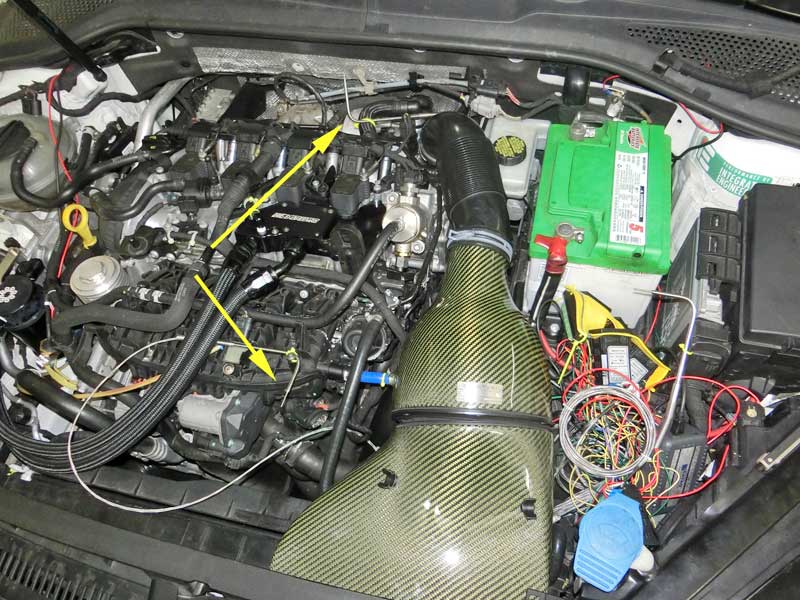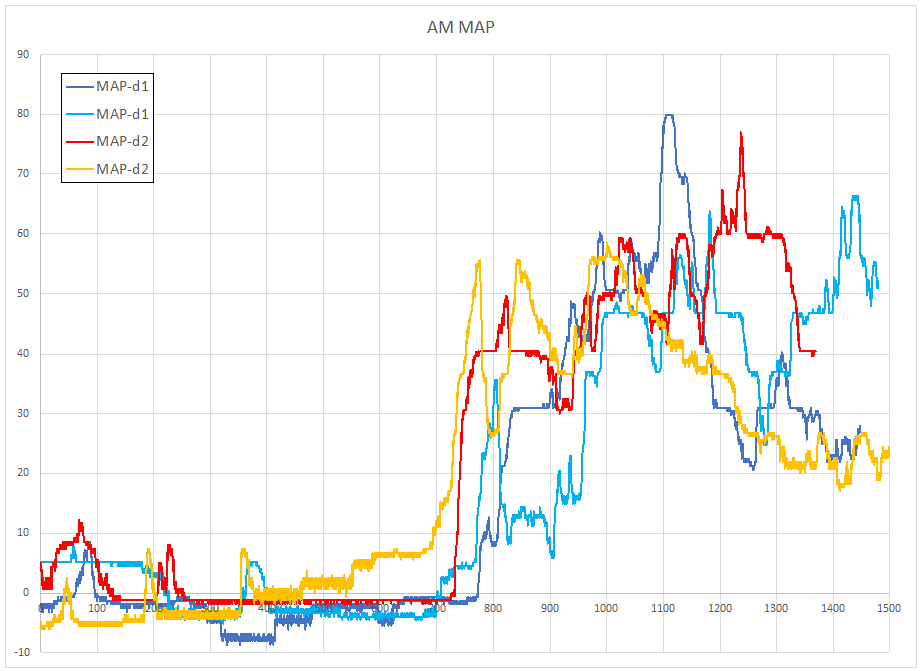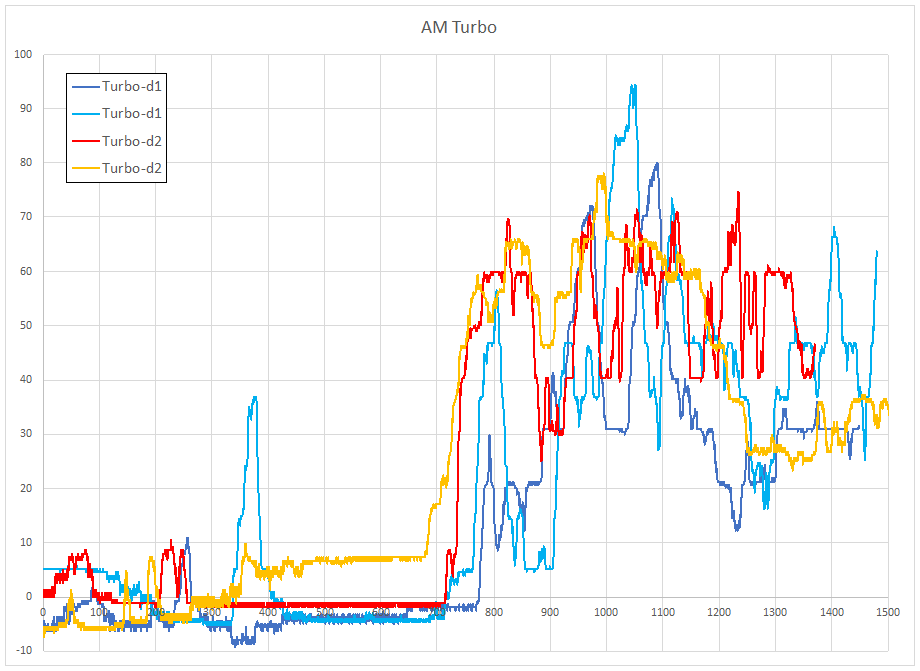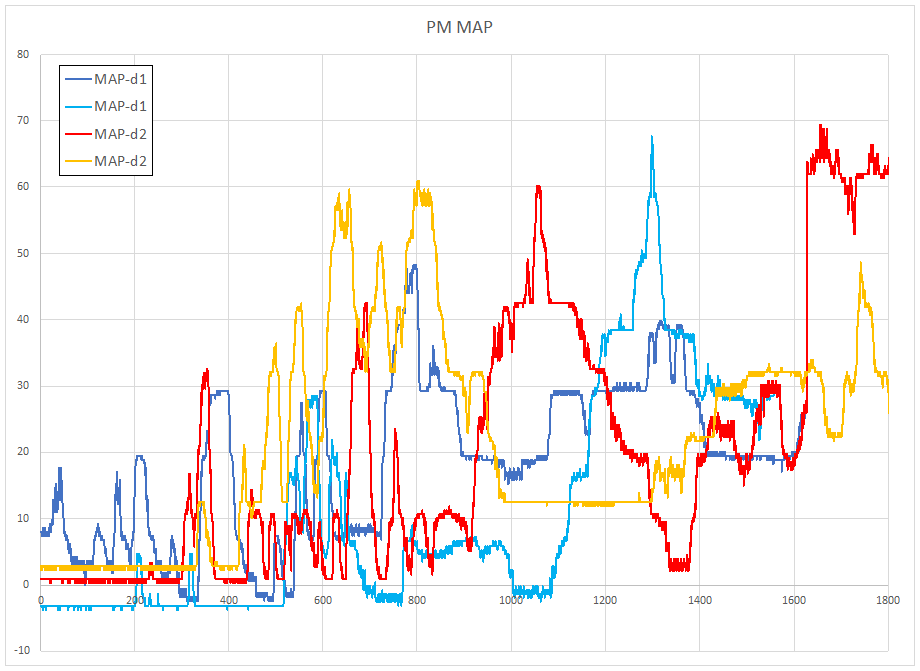Background:
The purpose of this test is to try and determine if the removal of the weather seal at the back of the engine compartment, where the engine compartment and hood meet, will affect the underhood temperatures during daily driving on roads with speed limits of 45 mph and below.
The Test:
A pair of air temperature sensors are installed inside the engine compartment near the MAP sensor and the turbocharger. The temperature at these locations was measured during daily driving that lasted for approximately 25 minutes. The test, encompassing back and forth driving, was repeated once for each condition after an overnight period of cool down.
The passenger side grill is open allowing airflow into the engine compartment. The Eventuri intake draws air in through the driver side only.

Speed during this driving reached a maximum of 45 mph and more often was around 35 mph. There are periods of stop and go driving during the later portion of the drives.
Results:
Temperature values presented on all charts are normalized by subtracting the ambient air temperature from the sensor reading.
Note: Due to differences in sensor baseline readings there are periods in the first half of the drives where the temperature difference is reported as less than zero.
d1 and d2 signify the data associated with the control variable, the weather seal.
The horizontal axis is time in seconds, the vertical axis is temperature in degrees fahrenheit above ambient.
Shown on the two charts below are the temperatures at the MAP and Turbo during the morning (AM) drive:


Data for afternoon driving is shown on the next two charts:


Hint: d1 signifies the test condition where the weather seal is removed. d2 signifies the test condition where the weather seal is in place.
Conclusion:
There is no clear difference in underhood temperatures between the two test conditions measured in this test.

Thanks Jeff for that test and for all the testing you do for the community.
You’re welcome.
Hi Jeff, I appreciate all the time you put in for each test you do. Did you notice any issues of just removing the weather stripping where the plastic cowl could flap around? There’s a video of a guy replacing the weather stripping with a thinner rubber pinchweld, since he noticed the plastic cowl could flap around while driving and duct tape was not strong enough to hold it steady.
https://www.youtube.com/watch?v=3XXrETFUTls
Did you notice any additional noise from the engine bay that could have been the cowl moving around? Do you think with your testing, it could have caught the wind and blocked airflow, resulting in no significant difference in temperature?
I did not notice any change after removing the weather strip. Based on the temperatures within the engine compartment I doubt there’s enough airflow to raise the cowl, but it isn’t something that I tried to account for.
Thank you for this. I just read about this elsewhere and I was wondering about it.
You’re welcome!
Hi Jeff, I did this to my car, but didn’t take all of the seal off at the back. I took off about 10 inches on either side, up to where the clip is holding the cowl down. I figure, it’s not going to hurt anything and if I change my mind, I can always put the pieces back on that I cut off.